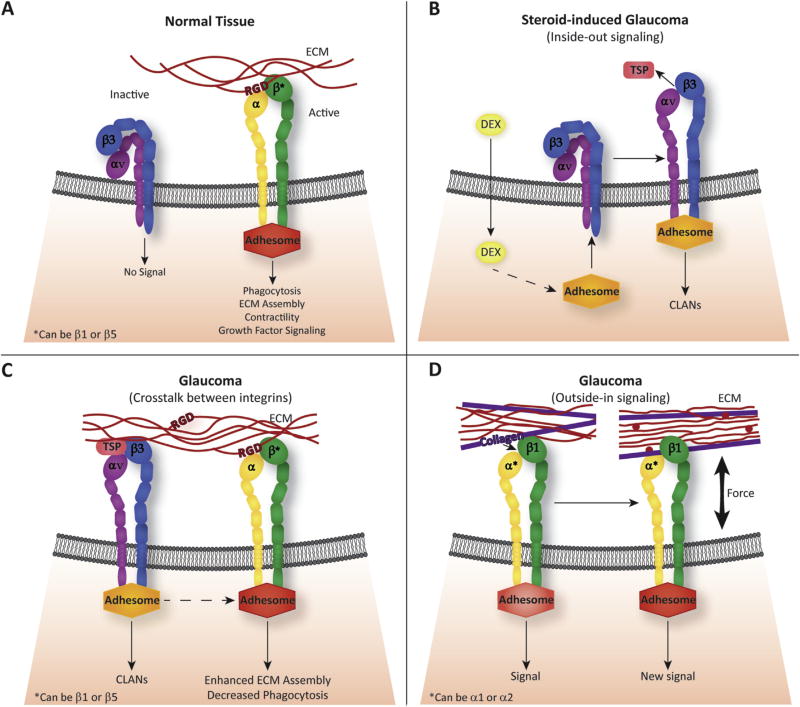Fig. 4.
Regulation of Integrin signaling. (A) Integrins can be found in both an inactive, bent conformation and an active state on the cell surface. In the active state, the integrin assumes a fully extended conformation and the subunits are separated to allow for interactions with their ECM ligands and a multi-protein intracellular complex called an adhesome. In this conformation, the ECM/integrin/adhesome complex can regulate a number of biological processes including phagocytosis, ECM assembly, contraction/relaxation of the trabecular meshwork and growth factor signaling. The consensus sequence used by many non-collagen binding integrins to bind the ECM is an Arg-Gly-Asp (RGD) motif. (B) Inactive αvβ3 integrins in the TM can be activated by dexamethasone-induced intracellular signaling pathway(s) that trigger the conformational change in the integrin to its active state. This process, called inside-out signaling, activates the integrin by promoting the binding of an adhesome complex to the cytoplasmic tail of the αvβ3 integrin. In turn, a conformational change is induced into the extracellular domain of the integrin that allows it to bind a ligand such as thrombospondin (TSP). Inside-out signaling has been shown to cause the formation of CLANs and hence may be involved in steroid-induced glaucoma. (C) Crosstalk between activated αvβ3 integrins and other integrins could affect other integrin-mediated signaling events in TM cells and induce a glaucomatous phenotype. In particular, activated αvβ3 integrin can cause a reduction in αvβ5 integrin-mediated phagocytosis, induce CLAN formation, and increase the amount of fibronectin assembled into the matrix. Adhesomes are represented as different colored shapes to indicate that each adhesome is unique to each integrin. (D) Newly synthesized proteins in the ECM can bind to integrins and initiate the formation of an adhesome and new signaling events. This is called outside-in signaling and could participate in the pathophysiology of glaucoma if constitutively active integrins were found on the cell surface of TM cells. Red circles represent newly synthesized ECM components.

